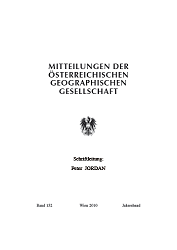
Mitteilungen der Österreichischen Geographischen Gesellschaft Band 152/2010, pp. 183-200, 2012/03/29
152. Jg. (Jahresband), Wien 2010
Die Stadtregion Ost, die Vienna Region, wird weiter wachsen. Lebten im Jahr 2009 rund 2,6 Mio. Menschen in der Agglomeration (1,7 Mio. in Wien und rund 900.000 im Umland), so werden es 2030 rund 3 Mio. sein (2 Mio. in der Stadt Wien und 1 Mio. im Umland). Es erhebt sich daher historisch erstmals die Frage, wie dieses neue Wachstum bewältigt werden kann. Im Rahmen von Modellrechnungen wurde diese Frage unter unterschiedlichen Prämissen beantwortet: Welche räumliche Struktur stellt sich ein, wenn Trends fortgeschrieben werden? Wie verteilt sich das Wachstum in der Stadtregion, wenn es nach den Vorstellungen der Kommunalverantwortlichen geht? Und wie viele Menschen kann die Stadtregion aufnehmen, wenn die Aufnahme auf die gut erreichbaren Teile der Stadtregion beschränkt bleibt? Darüber berichtet der folgende Beitrag.
...
A Growing Urban Region – Model Calculations on Population Growth in the Urban Region East
The Urban Region East, the Vienna Region, will grow further. When in the year 2009 around 2.6 million people were living in the agglomeration (1.7 million in Vienna [Wien] and ca. 900,000 in its surroundings), we will face a number of around 3 million in 2030 (2 millions in the city of Vienna and 1 million in the surroundings). This lets for the first time in history the question arise, how this growth can be managed. By model calculations this question was answered under various assumptions: Which spatial structure emerges, when current trends are extrapolated into the future? How will growth spread over the urban region, when the wishes of communal representatives are respected? And how many people is the urban region able to host, when growth is confined to parts of the urban region, which are easily accessible? This is the topic of this contribution.